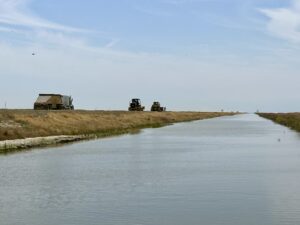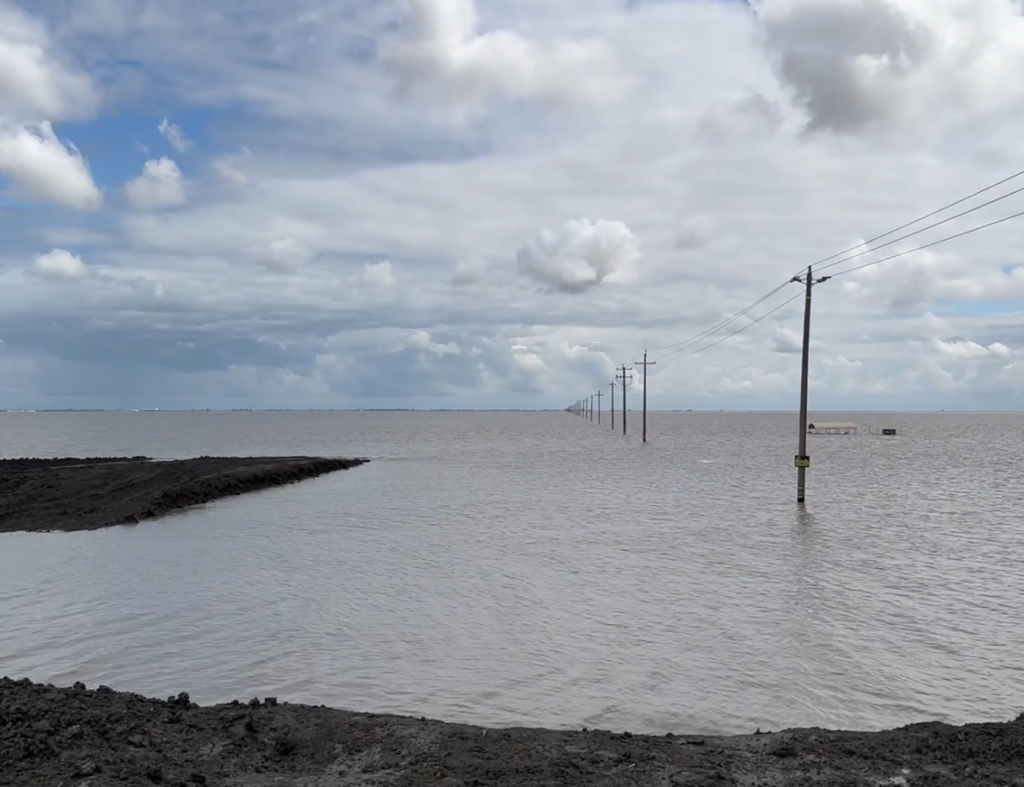Kings County is spending millions to repair damages from this year’s devastating floods and, like many other valley counties, is turning to the federal government to try and recoup those costs.
So far, the county has spent about $5 million on projects addressing storm damages, said Abraham Valencia, Kings County office of emergency services manager. But full costs for Kings County are estimated at about $28 million, he said.
Total requests for reimbursement to the Federal Emergency Mangement Agency (FEMA) from all agencies in Kings add up to nearly $45.5 million. That amount includes requests from irrigation and flood control districts as well as the City of Corcoran. FEMA funding isn’t available to private home owners and businesses, which also suffered severe damage in the floods.
Most of Kings County’s costs stem from road closures, emergency operations during the storms, water testing, levee repairs, debris cleanup and flood fighting materials such as sand and rock, said Valencia.
Kings County was slammed by floodwaters during this year’s storms, particularly in the Tulare Lake basin where infrastructure was overwhelmed by swollen waterways and the natural lake was reformed, submerging farmland and public roads for months.
Some of the most expensive projects the county is looking at are submerged roads in the lakebed.
“They’ve been underwater for so long that it’s not going to be something that you can just look at and repair,” said Valencia. “They need extensive engineering consideration.”
Even if the roads appear intact when the water recedes, there will still need to be studies done to make sure they are stable and in usable condition, he added.
County staff is also requesting funding from FEMA to raise some roads in the lakebed so they’re still accessible during the next flood. But it’s an expensive request at $3 million to $4 million for each section of road. The process would be intensive including regrading and adding significant amounts of earth to the roads.
Mitigation projects are sometimes approved by FEMA if it means the same situation will be prevented from happening again, said Valencia.
The single biggest reimbursement request in Kings County is for rebuilding the Corcoran Levee. The levee, which protects the City of Corcoran and two state prisons, took on immense amounts of water when the lake reformed this year. State and local agencies frantically worked during the floods to raise the levee at a cost of $18 million.
The state paid for that cost but is now seeking reimbursement through FEMA.
“A lot of these costs, there’s no upfront money with FEMA, it’s rare,” said Valencia. “And so the money has to come from somewhere and then hope that we get it reimbursed.”
This is the second time in six years the Corcoran Levee has had to be raised and rebuilt because of subsidence, land sinking.
In 2017, residents paid $10 million to raise the levee, which sank again requiring another rebuild this year. The culprit has been excessive groundwater pumping, which has caused a wide swath of land in the area to sink.

As Kings and other counties are waiting for FEMA money for their projects, all eyes are on the coming winter which is predicted to be wet again. Despite the potential for more significant storms, Valencia said Kings County is prepared.
“Essentially, that levee is brand new. We’re very confident in that levee holding, protecting Corcoran in this upcoming season,” said Valencia.
A contract was also approved recently for work around the town of Stratford, which also relies on levees for protection.
Agencies such as the Kings River Conservation District haven’t stopped work along the Kings River to rebuild infrastructure, said Valencia. Workers have paid particular attention to areas of concern which have been reinforced, he added.
The Cross Creek Flood Control District, which operates in the lakebed, has been working on flood relief projects, preparing areas of land to take on flood water that weren’t available before, said Valencia.
“I’m pretty confident that we’ll be okay,” said Valencia. “I say it with a grain of salt just because we’ve been in drought mode for so long. And then we got smashed with this rainfall and the potential is there, but we’ve done the legwork to try to mitigate as much as we can.”
Part of the problem in Kings County and other south San Joaquin Valley counties, is that flood management is overseen by a patchwork of disconnected local agencies. North valley flood issues response is included in the Central Valley Flood Protection Plan, released by the Central Valley Flood Protection Board. And while the south valley comes under the board’s jurisdiction, it is not covered by the plan, according to a Flood Protection Board spokesman.
That has led to disjointed, at best, flood management in the south valley.
So far, there have been no changes to the systems of flood management in the south valley. Folding in southern valley counties to the flood plan would require legislation. Currently, there is not any legislation to expand the plan’s coverage, according to a spokesperson for the state Department of Water Resources.
“Regionally led flood planning in the Tulare Basin would require legislation similar to the CVFPP but tailored to specific conditions in the area,” said Karla Nemeth, director of DWR, in a statement.
But local agencies and governments have heard of nothing of the sort.
Valencia said he’s not aware of any such efforts.
“But I’m certainly interested if that’s the case,” said Valencia. “Because we need to get together and start planning and discussing.”
Share this:
- Click to share on Facebook (Opens in new window)
- Click to share on Twitter (Opens in new window)
- Click to share on LinkedIn (Opens in new window)
- Click to share on Reddit (Opens in new window)
- Click to share on Tumblr (Opens in new window)
- Click to share on Pinterest (Opens in new window)
- Click to share on Pocket (Opens in new window)
- Click to share on Telegram (Opens in new window)
- Click to share on WhatsApp (Opens in new window)
- Click to print (Opens in new window)









You must be logged in to post a comment.